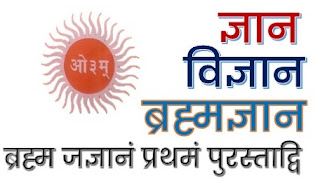The Pratibimba Model: 3-4 The light beam coming directly from the source (moon, in this case) stands for the Self. The medium of reflection stands for each individual’s Upadhis (body, mind and intellect). The reflected light stands for the Jeeva or individual soul. There is one moon, reflecting through many waters (Upadhis or living beings). The reflected light varies in quality depending on the clarity and stillness of the Upadhi it is reflected from. A very Rajasic or Tamasic Upadhi reflects a poor image of the moon. A Sattwic Upadhi reflects it to near perfection. In a saint, who has no identification with his Upadhis at all, the reflected light is as though coming off a mirror surface. This can be interpreted to mean that the saint is no different from Brahman Himself, as there is no contamination of the reflection passing through him. This is only a model, and as such, not every characteristic of the Self is symbolized by the Light rays. However, it is very useful to help our understanding.















.jpeg)
.jpeg)
.jpeg)
.jpeg)
0 Comments